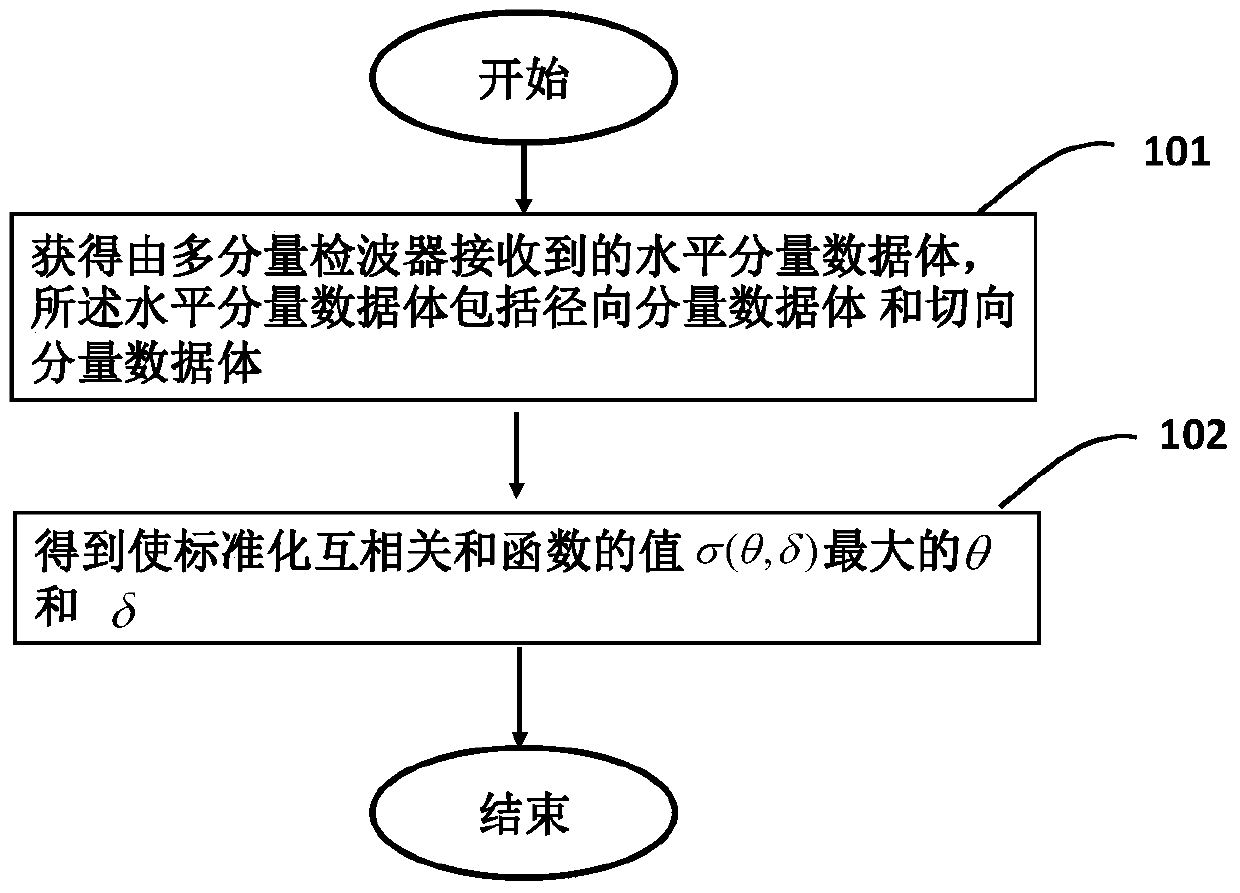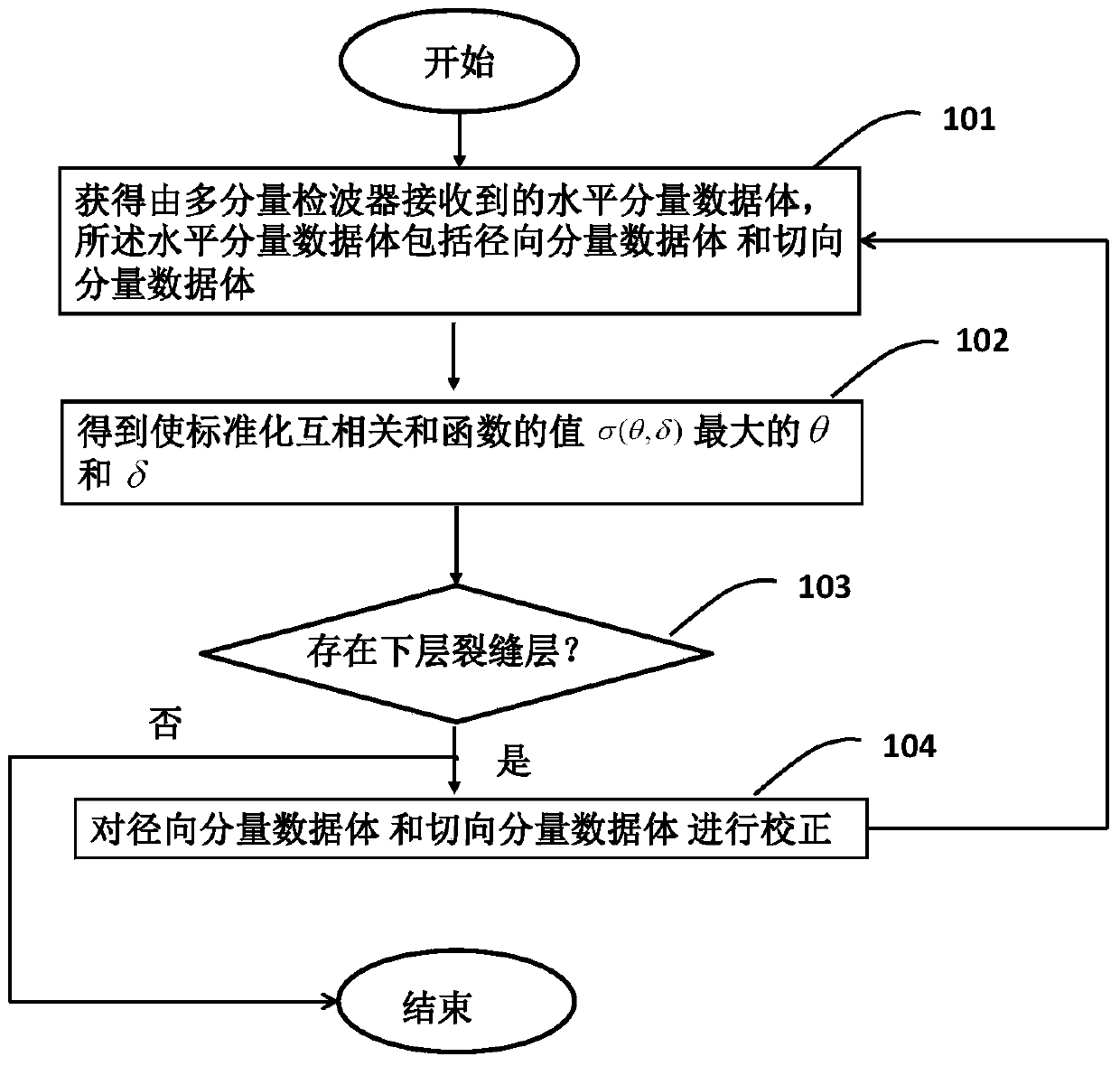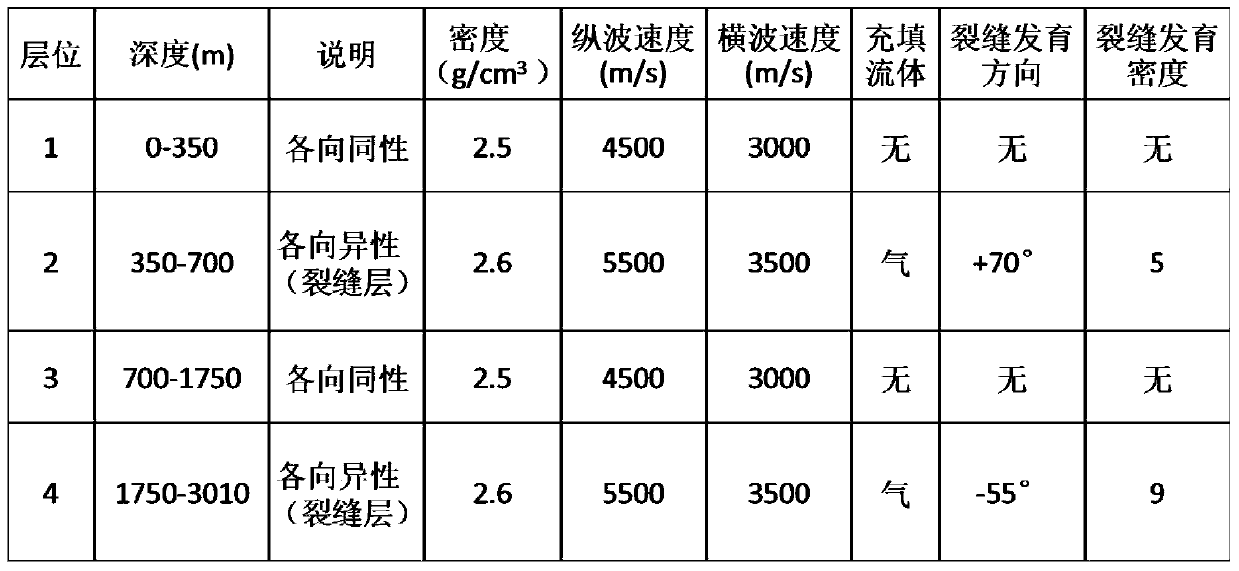Fracture attribute factor extraction method and device based on shear wave birefringence
A birefringence and shear wave technology, applied in seismic signal processing and other directions, can solve the problems of difficult to achieve, difficult to obtain dual-source four-component data, and high acquisition cost, and achieve the effect of easy implementation, wide adaptability and strong robustness
- Summary
- Abstract
- Description
- Claims
- Application Information
AI Technical Summary
Problems solved by technology
Method used
Image
Examples
Embodiment 1
[0037] figure 1 A method for extracting fracture property factors based on shear wave birefringence according to an embodiment of the present invention is shown, the method includes:
[0038] Step 101, obtaining the horizontal component data volume received by the multi-component detector, the horizontal component data volume includes the radial component data volume R(t) and the tangential component data volume T(t);
[0039] Step 102, get θ and δ that maximize the value σ(θ, δ) of the normalized cross-correlation sum function in the following formula (1), where θ is the angle between the natural coordinate system and the observed coordinate system, that is, the fracture development Direction and azimuth, which indicates the direction of fracture development, δ is the delay time between fast shear wave and slow shear wave after splitting, which indicates the density of fracture development:
[0040]
[0041] Among them, L is the length of the analysis time window, and the...
Embodiment 2
[0052] figure 2 A method for extracting fracture attribute factors based on shear wave birefringence according to an embodiment of the present invention is shown. This embodiment also includes the following steps on the basis of embodiment 1:
[0053] Step 103, judging whether there is an underlying fractured layer, which can be observed from seismic records, if yes, go to step 104, if not, then the method ends.
[0054] Step 104, correct according to the following formula (5);
[0055] R down (t)=R(t)cosθ-T(t)sinθ (5)
[0056] T down (t)=R(t)sinθ+T(t)cosθ
[0057] where R down (t) and T down (t) represents the lower layer radial component data volume and the lower layer tangential component data volume, where the lower layer refers to the lower layer relative to the current layer where R(t) and T(t) are located, and then use the corrected R in step 104 down (t) and T down (t) Replace R(t) and T(t) in step 102, re-execute step 102 to obtain the fracture development d...
Embodiment 3
[0061] According to another embodiment of the present invention, a device for extracting fracture attribute factors based on shear wave birefringence is proposed, including:
[0062] means for obtaining a horizontal component data volume received by a multi-component geophone, said horizontal component data volume comprising a radial component data volume R(t) and a tangential component data volume T(t);
[0063] are used to obtain theta and δ that maximize the value σ(θ,δ) of the normalized cross-correlation sum function in the following formula, as components of the fracture property factor:
[0064]
[0065] where θ is the angle between the natural coordinate system and the observation coordinate system, which indicates the direction of fracture development, δ is the delay time between the fast shear wave and the slow shear wave after splitting, which indicates the density of fracture development, and L is the analysis time window length,
[0066] Among them, the expres...
PUM
 Login to View More
Login to View More Abstract
Description
Claims
Application Information
 Login to View More
Login to View More - R&D
- Intellectual Property
- Life Sciences
- Materials
- Tech Scout
- Unparalleled Data Quality
- Higher Quality Content
- 60% Fewer Hallucinations
Browse by: Latest US Patents, China's latest patents, Technical Efficacy Thesaurus, Application Domain, Technology Topic, Popular Technical Reports.
© 2025 PatSnap. All rights reserved.Legal|Privacy policy|Modern Slavery Act Transparency Statement|Sitemap|About US| Contact US: help@patsnap.com



